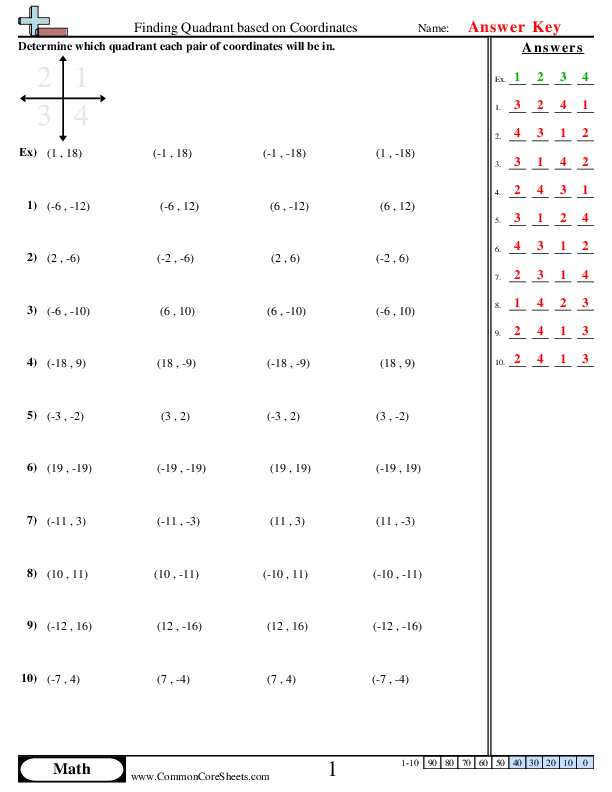Finding Quadrant based on Coordinates
6ns6b


×
Description:
"This worksheet is designed to challenge children's understanding of math by finding the quadrant based on coordinates. With 10 diverse problems that utilize various coordinates, it helps sharpen children's skills in analyzing the quadrant of various points. Customizable based on your child's proficiency level, this educational resource can also be converted into flash cards for easy recall or used in distance learning setups, providing flexible and efficient learning approaches."

×
Student Goals:
Understanding of Quadrants and CoordinatesAfter completing this worksheet, students should have grasped the fundamentals of understanding the four quadrants of a Cartesian coordinate system. They should be able to identify which quadrant a point belongs to based on its coordinates. They would have developed a foundational understanding by practicing with different pairs of coordinates, thus gaining proficient knowledge of how each of the four quadrants is distinctly defined by negative and positive values of x and y coordinates.Enhanced Analytical SkillsThe worksheet would have honed students' analytical thinking skills. Decoding the quadrant from given coordinates is not just about applying a formula, but also about logically interpreting the values. Therefore, by consistently practicing problems of this nature, students inadvertently enhance their logical reasoning and analytical skills. They learn to pay close attention to detail and draw accurate conclusions based on the given data.Preparation for Advanced Mathematical ConceptsKnowing how to decipher quadrants from coordinates is a preliminary yet crucial step towards understanding more complex areas of mathematics. Completion of this worksheet would mean that the students are ready to delve into more advanced mathematical topics that require a good grasp of coordinates and the Cartesian system, such as geometry, vectors, and even calculus. This understanding provides them with a firm base, aiding them in solving more complex problems in the future.Application and Problem-Solving SkillsBy the end of this worksheet, students would also have an enhanced ability to apply their theoretical knowledge to practical mathematical problems. They should be able to read a coordinate pair, identify the quadrant, and use their findings to solve various math problems. This not only increases their adeptness at problem-solving but also boosts their confidence in handling more complex mathematical scenarios.Increased Confidence and Self-Efficacy in MathematicsFinally, successfully finding quadrants based on coordinates can bolster students' confidence in their mathematical abilities. Accomplishing such tasks can slowly but surely eliminate any math-related anxiety, fostering a healthy and positive attitude towards the subject. The confidence gained from overcoming challenges like these contribute to their overall self-efficacy, leading to better academic performance broadly over time.

